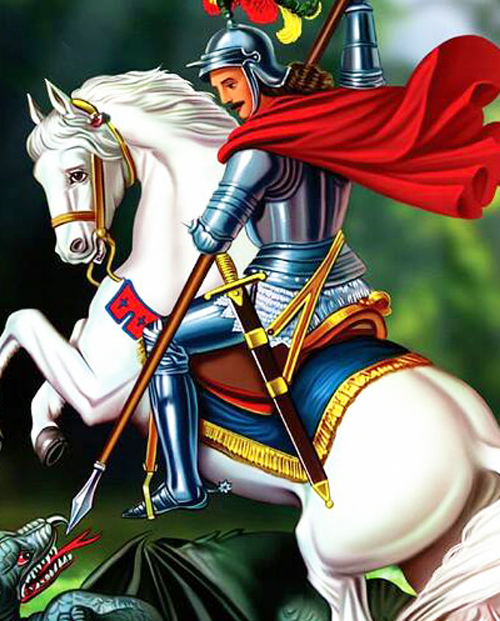
History
The Catholicate of the Malankara Orthodox Church
The word “Catholicose” means ‘the general head’ or ‘general bishop’. It can be
considered as equivalent to “Universal Bishop’. This title and rank are much more
ancient than the title Patriarch in the church.
In the ministry of the early church there were only three ranks namely,
Episcopos (Bishop), Priest and Deacon. By the end of the 3rd century or by the
beginning of the fourth century certain bishops of certain important cities or
provincial capitals in the Roman empire gained pre- eminence that other bishops and
they came to be known as Metropolitans. The Ecumenical councils of the fourth
century recognised the authority of these Metropolitans.
By the fifth century the bishops in major cities like Rome, Constantinople,
Alexandria, Antioch etc. gained control over the churches in the surrounding cities.
Gradually they became the heads of each independent regional church and were
called Patriarch, which means ‘common father’. The same rank in the Churches
outside the Roman empire was called Catholicos. There were three ancient
Catholicates in the Church before the fifth century. They were the Catholicate of the
East (Persia), the Catholicate of Armenia and the Catholicate of Georgia. None of
these ranks and titles are the monopoly of any church. Any Apostolic and national
church has the authority to declare and call its head, Catholicose, Pope, or Patriarch.
Even though the title Catholicose had not existed in India before the 20th
century, the idea behind the Catholicate or Patriarchate as the head of a national
independent Church was there from the early centuries and there was a similar native
position or authority in the Indian Church. As we say that St. Peter was the first Pope
of Rome, St. Thomas was the first head of the Catholicos of India. As all other
Apostles did, he also established Church of India and set up to continue its
administration in India. That was the Apostolic authority that existed in India
throughout the centuries. In India, the position and authority of the Catholicose has
developed in the history of the Church throughout the past centuries. The first stage
of the apostolic ministry in the Malankara Church is from the time of St. Thomas till
the middle of the fourth century when the authority of the Church was vested in the
hands of the Archdeacon. The second stage is the period of the reign of the
Archdeacons which started from the middle of the fourth century and lasted till the
sixteenth century.
The third stage started when the archdeacon was elevated to the position of a
Bishop by the community with the name Marthoma I in 1653. Since then, the head of
the community was Marthoma Metrans and later the position was expanded to
Malankara Metropolitan with more recognition.
When in a religious turmoil the Patriarch of Antioch interfered and suspended
the Malankara Metropolitan demanding complete surrender, in 1912 the Church
consecrated the senior Metropolitan as the Catholicose and head of the Church.
In 1934, through the meeting of the Malankara Association the authority and
powers of the Malankara Metropolitan was entrusted to the Catholicose. Thus both
the spiritual and temporal authorities of the Church was vested in one person who
was the Catholicose Malankara Metropolitan and the development of the authority in
that direction was completed in the Church.
In all the Churches the position of the Patriarch or the Catholicose was a
development of authority in their history. In Rome, Alexandria, Antioch and
Constantinople and in the Persian Church it achieved almost full development and
recognition in the 4th century itself. Jerusalem became a Patriarchate at the council
of Chalcedone in 451. Georgian and Armenian Catholicose were also developed in the
same period.
The Patriachate was developed in the Russian Orthodox Church between 1448
and 1589. In Rumenia it was established in 1885. The Serbian Patriarchate was
established in 1879 and the Bulgarian Patriarchate was established in 1883. The
patriarchate of Ethiopia was established in 1958. It happened in the Malankara
Orthodox Church in 1912.
The Catholicate in India was a growth and development through centuries
within the Malankara Church. Of course, the developments in other churches like
Persia, Antioch, Rome and external interference have influenced the growth in
different stages.
It should always be considered as a symbol of Apostolic origin, authority and
heritage as well as the nationality and independence of the Malankara Orthodox
Church. Throughout the centuries the Metropolitan heads of the Thomas Christians
were known as successors of St. Thomas, the founder of the Indian church. The
Vatican Syriac codex 22 written in 1301 at Kodungaloor refers to the Metropolitan of
the church as “The Metropolitan Bishop of the See of St. Thomas, and of the whole
church of Christians in India”. The church always asserted that St. Thomas has his
apostolic throne in India as St. Peter had it in Rome or Antioch. When the Catholicate
was established, the catholicose as the head of the Malankara church, took the title
“The successor of the Apostolic throne of St. Thomas”.
History
St George IOC, Darwin, NT, Australia
Holy Qurbana
Martha Mariam Vanitha Samajam
Youth Movement
Sunday School
